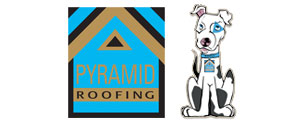- Do you subscribe to Dharma Dog Training’s Newsletter? You should.
- A Unique Campaign from The Humane Society of the United States
- Rabid bats in Omaha- Stay safe, prepared with these tips
- Springtime Activities in Omaha
- Mill Dog Monthly from Bailing Out Benji
- World Spay Day, Legislative Alert in Nebraska
- Attend the Nebraska Rescue Council’s monthly meeting this Saturday
- Five Hard-to-Ignore Reasons to Adopt!
- Paws in Pink to Benefit Breast Cancer Foundation
- VCA, Inc. Acquires MidWest Vet Specialists from Kansas State University
Separation Anxiety in your dog? Read this!

Rosie Tran, a guest blogger to Pets in Omaha, is founder of ChummyDoggy where she shares love and tips and tricks that will help you become a better dog-parent. In this post, she talks about dogs with separation anxiety and how to deal with it. Rosie has a dog, Lola, and would love a visit on Twitter @RosieTran20. Enjoy the read!
One of the most common complaints among dog owners is that their pets are destructive and disruptive when left alone for long. Some of their pets usually defecate, urinate, howl, bark dig, chew and might even try to escape. Although these symptoms might signal other things, they can also show that the dog is distressed. When these problems are accompanied by other behaviors such as anxiety and drooling when their owners are planning to leave then it means that the dog is suffering from separation anxiety.
Dogs with distress and anxiety can damage furnishings, bark excessively, and defecate or urinate anyhow at home. In some severe cases, they can even get injured while trying to escape. When it comes to treating separation distress, you need to consider whether your dog is exhibiting these behaviors. If it only shows these symptoms while alone or when you are leaving then you can safely conclude that it’s suffering due to separation. When treating such a dog, your goal should be to resolve the underlying issue by teaching him to tolerate or even enjoy being left alone. There are various ways to help your dog combat stress and anxiety. Aromatherapy may be a suitable and safe natural option to help calm your pup’s nerves – if you proceed with caution. Visit Motherhoodcommunity.com to know more about this. When treating such a dog, your goal should be to resolve the underlying issue by teaching him to tolerate or even enjoy being left alone.
Think your dog needs help fighting restlessness that contributes anxiety and other health problems? In this guide, here, check out Trazodone for dogs and other remedies.
Why dogs develop separation anxiety
Dogs are generally social animals that like to spend time with people and other dogs. But even though we enjoy being their center of attention, it’s not the best thing to do. For some dog breeds, the bond they share with you might be so strong that whenever you are out they become bored and distressed. So what causes a dog’s separation anxiety? Anxiety could be caused by some major life events such as getting a new job or getting engaged in other activities. Here are some of the major causes of dog’s separation anxiety:
Change in the schedule– An abrupt change in schedule can instantly trigger separation anxiety. For instance, if you have been working from home and then suddenly gets a job that requires you to leave your dog for hours, your dog may become anxious.
Change of family of guardian– Being surrendered to a shelter, abandoned or given to new family can lead to separation anxiety.
Change in residence– Relocating to a new place can also lead to the development of this condition. The sudden absence of a family member either through moving away or death can immediately trigger the development of separation anxiety.
How to care for a dog with separation anxiety
Wear them out– This is perhaps one of the best things to do to a dog with separation anxiety. Before leaving, you need to take your pet for a rigorous walk. Remember, a tired dog is always a very relaxed dog. Exercising or walking your dog for at least 30 minutes will not only relax him but also diverts his attention to sleep and food. If you own a beagle you can even look for dog food for beagles such as squid. But can dogs eat squid? While dogs can eat squid, you need to ensure that you gave him in small amounts.
Change your going out signals– When it comes to caring for a dog with separation anxiety, you need to change some of the signs that show that you are about to leave. For instance, you can leave your items in different locations, use a different door or put on your coat and wait for 20 minutes before leaving. The goal is to make sure that your dog doesn’t associate some of these actions with your leaving. When you’re finally leaving you can give him a treat or toy to play with and distract him. Calming your dog is not only a short-term remedy but is also effective in teaching your dog that being left alone is not a bad thing after all.
Make your going and coming less exciting– When leaving, don’t make any fuss. Instead of greeting your dog when you arrive home, give him some time before petting it calmly. High arousal arrivals and departures can make it difficult for them to cope when left alone. Avoid getting emotional when leaving your dog. Just calmly say goodbye and leave and when you come back quietly say hello.
Leave your dog with something carrying your scent– By leaving your dog with an item carrying your scent, you will comfort your pet and also help him to remain calm. Remember, unlike other pets, dog’s main sense is smell hence some scents can make them feel safe. Before you go make sure you leave a towel, unwashed clothes, or unsoiled blanket with the dog. You might even leave the item in their crate especially if he has been trained. A nice chew resistant dog bed that smells like comfort works great, too.
Create a personal space for your dog and train him to be alone– One of the best to do is to tell your dog to stay in the room alone while you stay in different part of the house. If your dog is suffering from severe separation anxiety, you need to start with 10 to 30 seconds intervals before moving to 30 minute and then several weeks. Instead of sleeping with him, you can get him a different bed where you can give him calming treats such as dog food for beagles. This will eventually teach him how to be independent and enjoy their own space thus helping you deal with their anxiety when you are away.
Stay calm and assertive– When you are ready to go you need to leave those nervous, guilty, concerned feelings and let your pet understand that everything will be okay by being confident with your self. If you are calm and assertive, you can easily ease the anxiety in your dog.
Ask a vet for help– Sometimes you can’t treat separation without the help of a behaviorist or a vet. Since severe cases need to be treated you need to consult a vet to assist you with the necessary steps to take. Even if your dog’s case is not severe, a good checkup can help you rule out other causes if any. Make sure you explain to them all the symptoms that your dog experiences.
What to avoid
· Avoid scolding or punishing your dog as this might worsen the situation.
· Do not get your dog another companion since you might end up doubling the problem.
· Do not treat separation anxiety by just leaving the radio or TV on.
· Do not make a fuss or yell at your dog.
· Do not focus on obedience training as this cannot cure separation anxiety.
Thankfully, by using the right methods you can treat your dog’s separation anxiety. However, if the condition is serious make sure you seek help from a trusted professional, like your vet or a trainer.
Related Posts
Latest News
-
3 Tips for Pet Owners on Training Rescue Dogs
Owning a rescue dog can take some work compared to...
- Posted 3 weeks ago
- 0
-
Choosing the Right Pet for Your Lifestyle
Are you thinking about getting a pet but unsure what...
- Posted 1 month ago
- 0
-
How to Make Your Rescue Pet as Comfortable as Possible
Did you bring home a new pet from a shelter...
- Posted 2 months ago
- 0
-
How Having A Pet Can Change Your Life
Having a pet can open your heart in ways that...
- Posted 7 months ago
- 0
-
How To Improve The Life Of Your Senior Pet
Do you have an elderly fur baby and want to...
- Posted 7 months ago
- 0
-
Springtime Activities To Enjoy With Your Furry Friends
Are you preparing for warmer weather and want some ideas...
- Posted 8 months ago
- 0
-
Pros And Cons Of Microchipping Your Pets
Have you considered whether your pets should be microchipped and...
- Posted 9 months ago
- 0






















You must be logged in to post a comment Login